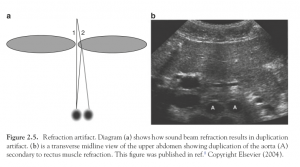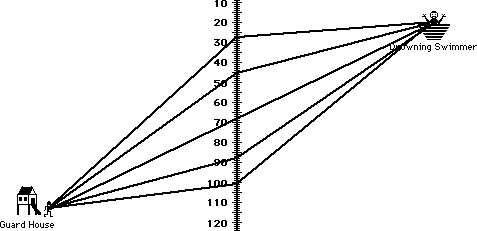Antibiotics have literally changed the world. Before antibiotics were invented, it was pretty routine for people to die of minor infections, like being scratched by a rose bush, or during childbirth. But antibiotics changed the world of medicine in ways that could only be described as miraculous.
Unfortunately, there is a possibility, that at some time in the near future, antibiotics will stop working as more and more antibiotic resistant strains of bacteria are emerging, and faster.
I first came across this article earlier this year, and was sufficiently alarmed, but on second thoughts, I wasn’t sure whether the author was simply overhyping the whole thing. However, a few weeks ago, WHO has come out with a report on this issue, which pretty much sounds a general worldwide alarm:
“Without urgent, coordinated action by many stakeholders, the world is headed for a post-antibiotic era, in which common infections and minor injuries which have been treatable for decades can once again kill,” says Dr Keiji Fukuda, WHO’s Assistant Director-General for Health Security. “Effective antibiotics have been one of the pillars allowing us to live longer, live healthier, and benefit from modern medicine. Unless we take significant actions to improve efforts to prevent infections and also change how we produce, prescribe and use antibiotics, the world will lose more and more of these global public health goods and the implications will be devastating.”
Where are “antibiotic-resistant” bacteria coming from? This works in pretty much the same way as vaccinations work. Basically, when bacteria are exposed to less than a full dose of antibiotics (i.e. when you discontinue antibiotics before the full course is over), they develop an immunity to that antibiotic. Basically, literally, what doesn’t kill them, makes them stronger. Now this strain of bacteria starts spreading… This process repeats with all the different antibiotics we have. And sooner or later we end up with strains of bacteria that are immune to all antibiotics known to man.
And this problem is getting worse. For example:
Tetracycline was introduced in 1950, and tetracycline-resistant Shigella emerged in 1959; erythromycin came on the market in 1953, and erythromycin-resistant strep appeared in 1968. As antibiotics became more affordable and their use increased, bacteria developed defenses more quickly. Methicillin arrived in 1960 and methicillin resistance in 1962; levofloxacin in 1996 and the first resistant cases the same year; linezolid in 2000 and resistance to it in 2001; daptomycin in 2003 and the first signs of resistance in 2004.
What is the meaning of all this? A hundred years ago, people used to die of minor infections. We, who’ve been lucky enough to be born in the age of antibiotics don’t know what that feels like. But maybe we’ll get to experience that soon enough:
The chief medical officer of the United Kinigdom, Dame Sally Davies — who calls antibiotic resistance as serious a threat as terrorism — recently published a book in which she imagines what might come next. She sketches a world where infection is so dangerous that anyone with even minor symptoms would be locked in confinement until they recover or die. It is a dark vision, meant to disturb. But it may actually underplay what the loss of antibiotics would mean.
This is not just a problem for people who get injured. A lot of modern medicine depends upon antibiotics. Most surgery would become potentially lethal if antibiotics don’t work:
Many treatments require suppressing the immune system, to help destroy cancer or to keep a transplanted organ viable. That suppression makes people unusually vulnerable to infection. Antibiotics reduce the threat; without them, chemotherapy or radiation treatment would be as dangerous as the cancers they seek to cure. Dr. Michael Bell, who leads an infection-prevention division at the CDC, told me: “We deal with that risk now by loading people up with broad-spectrum antibiotics, sometimes for weeks at a stretch. But if you can’t do that, the decision to treat somebody takes on a different ethical tone. Similarly with transplantation. And severe burns are hugely susceptible to infection. Burn units would have a very, very difficult task keeping people alive.”
Forget surgery. Something as simple as childbirth will become dangerous once again:
Before antibiotics, five women died out of every 1,000 who gave birth. One out of nine people who got a skin infection died, even from something as simple as a scrape or an insect bite. Three out of ten people who contracted pneumonia died from it. Ear infections caused deafness; sore throats were followed by heart failure. In a post-antibiotic era, would you mess around with power tools? Let your kid climb a tree? Have another child?
Update: I was reminded by Farhat (see his comment below) of a few things that I left out of this post:
- This is already happening. In the last one year, I know of at least two cases in my friends’ circle, where an elderly person, who was otherwise healthy, and was admitted to a hospital for a non-life-threatening condition, and was cured, but contracted a “hospital infection” just before getting a discharge, and then died less than 2 weeks later because the “hospital infection” did not respond to any antibiotics.
What should we do about this?
- First and foremost, STOP ABUSING ANTIBIOTICS. Do not take antibiotics unless it is really necessary. And if you do take antibiotics, do not discontinue midway. Discontinuing antibiotics midway is one of the main sources of antibiotic resistant strains.
- Stay away from hospitals unless it is life-threatening.
Should we be afraid? Very afraid?
References:




